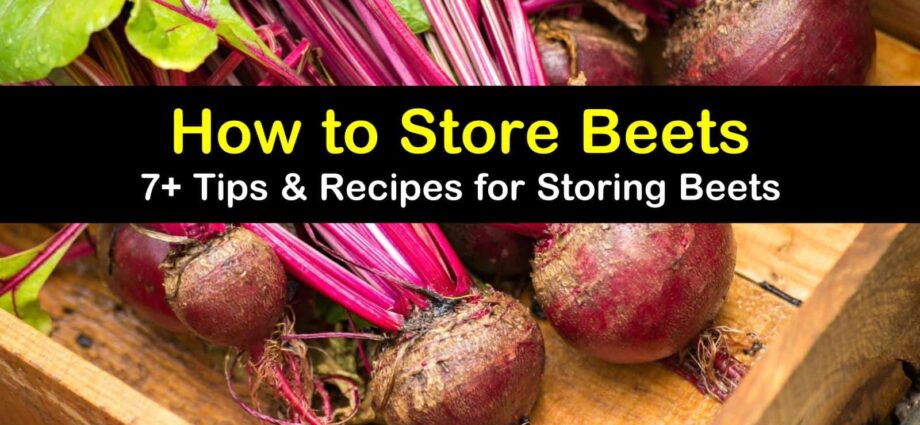How and where to store beets correctly?
The shelf life of beets exceeds that of potatoes or carrots. This root crop is not too picky about the conditions, but some important rules must be followed exactly with the recommendations. When unfavorable conditions are created, the beets will quickly become covered with wrinkles, lose juice and a significant part of their taste.
The nuances of storing beets:
- large beets are stored less than medium roots (too small beets also sweat quickly;
- frozen or damaged beets rots quickly (the first option is not only not stored, but also not eaten due to too disturbed taste properties);
- before storage, the beets must be completely cleaned of contamination (there may be a fungus in the ground that will accelerate the decay process, and soil particles must be removed as carefully as possible, without damaging the skin);
- before storage, beets must be dried in natural conditions (moisture will become the main cause of decay);
- if the humidity in the room where the beets are stored is too high, the decay process will rapidly spread to all root crops;
- often beets are stored mixed with potatoes (this storage method is successful for both types of root crops, beets absorb moisture from potatoes, and potatoes are protected from exposure to air humidity);
- in the refrigerator, it is better to store beets in paper or newspaper (in polyethylene, the shelf life of root crops can be significantly reduced);
- beets retain their structure well if sprinkled with sand or sawdust and placed in a wooden box;
- some gardeners recommend sprinkling the beets with salt or treating them with brine (before storing the roots, dry them as much as possible);
- when storing beets in plastic bags, in no case should they be tied (condensate is destructive for root crops);
- when removing the tops from beets, a few millimeters must be left;
- late and mid-season beet varieties are distinguished by a long shelf life;
- if the beets are stored on the balcony in winter, it is better to cover the roots with a thick cloth, for example, a blanket.
How much and at what temperature to store beets
The most optimal storage conditions for beets are considered to be a level from 0 to +2 degrees.… Air humidity for root crops needs increased – on average 90%. If the temperature is above +4 degrees, then the beets will begin to sprout, which will lead to a rapid loss of moisture in the root crops and wrinkling of the skin. The maximum shelf life of beets reaches one year, provided that all the necessary conditions are met.
Beets can be stored in the refrigerator for up to a month. Place the root vegetables in the vegetable compartment. You can pre-wrap the beets with paper or cling film. The safety of root crops should be checked regularly.
It is difficult to create optimal storage conditions for beets on the balcony. It is recommended to store root vegetables with potatoes. If the temperature changes too often or does not correspond to the desired level, then the shelf life of the beets will be reduced to 4 months.
Shredded beets are kept in the refrigerator for several days. It is better to use closed containers for this. The root vegetable winds up quickly, so it must be consumed as soon as possible. At room temperature, chopped beets can be stored for no more than 12 hours.
If desired, beets can be frozen… This should be done not with whole, but chopped root crops. They are pre-washed and peeled, and then cut into small cubes or grated. Such beets are stored in the freezer for several months, but after defrosting, they are suitable only for preparing second or first courses. The consistency of the root crop will be disturbed under the influence of low temperatures.










